![]()
Jesus proclaimed "salvation through knowledge, the self-knowledge of the divine light within"

"The knowledge claimed by these people (gnostics) is not worldly knowledge but mystical knowledge, knowledge of God and self and the relationship between God and self. In the Gospel of Judas, the word gnosis is used twice (50, 54), and in the second instance the text mentions 'knowledge to be [given] to Adam and those with him, so that the king of chaos and the underworld might not lord it over them.' This passage suggests that the knowledge coming to Adam and the descendants of Adam—the human race—offers protection and salvation from the powers of this world. As Bart Ehram also points out in his essay, the Gospel of Judas and Jesus himself in this gospel thus proclaim salvation through knowledge, the self-knowledge of the divine light within.”
The Gospel of Judas, pages 138-9
National Geographic, April 6, 2006
"The reappearance of the Gospel of Judas will rank among the greatest finds from Christian antiquity and is without doubt the most important archaeological discovery of the past 60 years. What will make this gospel famous—or infamous, perhaps—is that it portrays Judas quite differently from anything we previously knew. Here he is not the evil, corrupt, devil-inspired follower of Jesus who betrayed his master; he is instead Jesus' closest intimate and friend, the one who understood Jesus better than anyone else, who turned Jesus over to the authorities because Jesus wanted him to do so. This gospel has a completely different understanding of God, the world, Christ, salvation, human existence—not to mention of Judas himself—than came to be embodied in the Christian creeds and canon. It will open up new vistas for understanding Jesus and the religious movement he founded.”
—Bart D. Ehrman

Bart D. Ehrman is the James A. Gray Distinguished Professor and chair of the Department of Religious Studies at the University of North Carolina at Chapel Hill. His principal areas of research interest include New Testament interpretation and history of ancient Christianity (first three centuries), especially orthodoxy and heresy. Ehrman came to UNC in 1988, after four years of teaching at Rutgers University. He has published extensively in the fields of the New Testament and Early Christianity, having written or edited 19 books, numerous articles and dozens of anthologies of early Christian writings. Among his most recent books are Lost Christianities: The Battles for Scripture and the Faiths We Never Knew (Oxford Press), Lost Scriptures: Books that Did Not Make It Into the New Testament (Oxford) and Misquoting Jesus: The Story Behind Who Changed the Bible and Why (HarperSanFrancisco). Ehrman has served as president of the Southeast Region of the Society of Biblical Literature, chair of the New Testament textual criticism section of the Society, book review editor of the Journal of Biblical Literature, and editor of the monograph series The New Testament in the Greek Fathers. He currently serves as co-editor of the series New Testament Tools and Studies. Ehrman received his bachelor's degree from Wheaton College in Illinois and completed his M.Div. and Ph.D. degrees at Princeton Seminary, where his 1985 doctoral dissertation was awarded magna cum laude.
"Did You See The Sun, A Light?”
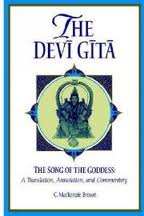
"The Devi Gita's introduction of the Goddess clearly resembles, and seems consciously to have in mind, the story of the humbling of Agni, Vayu, and Indra as a mythological backdrop. Nilakantha immediately identifies the supreme lustrous power as Uma Haimavati, and the Devi Gita, in its concluding chapter, refers to the Devi as Haimavati (10.39). The introduction thus establishes by dramatic means the identity of the Goddess as the supreme Brahman of the Upanishads, an identification enhanced by the frequent use of Upanisadic terminology (verses 1.28-29). The blazing light symbolizes her nature as pure consciousness, her supreme, aniconic or formless form"
On the very first day of Self-realization and meditation Kash found himself standing on an endless cover of clouds. Where was this incredible, utterly peaceful Shangri-La that he had stumbled upon?
There was one distinguishing celestial landscape that held him spellbound — The Light! It was shining high above at a distance.
He kept gazing at it, spellbound by its indescribable uniqueness and infinite luminosity. It was an extremely bright globe, much brighter than many suns. Yet, in spite of its dazzling brightness it never strained, dazzled, or hurt his eyes.
Since Kash had never seen any light that bright he thought it must be the sun, but at a much closer proximity. His father, finding no other logical explanation, also agreed that must be the case.
After months of meditation it slowly began to dawn that what Kash was seeing could not possibly be the sun.
But Kash kept on insisting that it had to be the sun as nothing he had seen on Earth shone so bright.
However, a definite uncertainty dawned within his father's inquisitive mind. He had this peculiar habit of not believing anything unknown or speculative unless proven beyond the shadow of a doubt. The sun that his son was seeing did not make sense. Not only was it just above the Great Adi Shakti but it did not emit heat!
On September 11, 1994, at 13:05 p.m., the word Shaibhang (Self-illumined) at the opening stanza of the Sri Guru Granth Sahib indicated that there was more to this Truth than met the mind. If Guru Nanak had described Shaibhang to be Self-Illumined, then the "very bright sun" that Kash spoke about could not be true. Moreover, his extraordinary observation of 'this sun' created more questions and doubts. Kash maintained that:
i) This 'Sun' is always behind Her at an angle but is not directly above, that is, at about 45 degrees.
ii) It did not rise and fall like the earthly sun. The "Sun" above Shri Mataji Nirmala Devi is fixed and stationary.
iii) 'This Sun' illuminates the entire Kingdom of God and enables everything to be clearly seen in fine detail, such as for example, the different hues of skin tone, which is why Kash could clearly see that Shri Jesus had a light brown skin tone and wore whitish-grey clothes, stretched taut by the sheer size of his muscular body.
iv) Kash could not ascertain the exact size and distance of 'this Sun' despite numerous visits.
v) In spite of its intense brightness this"Sun"emitted no heat. On the contrary, Kash said that the rays are cool!
Then one day he astounded his father by claiming that there are no shadows from the rays of this Sun! In all his journeys Kash insisted that he never saw any shadow in the Kingdom of the Spirit.
Though queried many times on this particular point, Kash maintained that "This Sun" does not create any shadow, a physical property which, however, is ubiquitous to our universal sun.
[In order to resolve this puzzling quandary of the 'different Sun' that Kash was daily witnessing, his father requested that he take this issue up with Shri Viswamata Nirmala Devi.
Kash went into meditation and the Divine Kundalini within his sacrum bone raised him up the Tree of Life into the Bridal Chamber. He burst through the clouds and reached His Kingdom within. There, the infinite light shone ever so brightly from above the Eternal Throne of the Great Mater Divinae Gratiae (Mother of Divine Grace) as She sat in Bliss and Joy. Shri Lok Mata Shri Nirmala Devi met him and the issue of"The Sun above Her"Was raised.
The Spirit of the Living God informed Kash that it was not the sun he was seeing, but a Light!

Lalita claim that the Light
above the Devi in the Kingdom
of God (Sahasrara Chakra) is
always there to be seen.
A few years later on April 7, 1996 Kash's younger brother Arwinder was asked if he had seen any sun or light when meditating with the Great Primordial Mother.
Without any hesitation, Arwinder replied that there was always a Light at Her place, but he was sure it couldn't be the Earth's sun. When asked how he came to that conclusion he said that the Light was different, somehow, as despite its extreme brightness it didn't hurt (strain or dazzle) his eyes like the sun does. Arwinder then added that one can gaze as long as one wishes at this Light, yet it doesn't hurt the eyes! When asked whether this Light cast shadows or not, Arwinder responded that he couldn't recall whether there were shadows or not.
On February 23, 1998 at 11.40 a.m. Arwinder was again asked about this Light above Shri Mataji. He reconfirmed that it was always above Her. He was then asked whether there were any shadows or not. This time he immediately replied that there were no shadows. His father asked him whether he was sure about that. He replied that he was definitely sure that there were no shadows!
On July 10 1998, at 10.35 a.m. Arwinder was posed the same question as to whether this Light caused any shadows. Again he replied there were none.
We must understand that for a child to say that light causes no shadows in the Spiritual World, unlike the common daily experience on Earth, requires the overwhelming confidence of an authentic spiritual experience.
On May 4, 2004 at 7.30 a.m. 10-year-old Lalita was asked about this Light:
Father: What is above Shri Mataji's head?
Lalita: The Light.
Father: Can you look at it for a long time?
Lalita: Yes, you can look at it.
Father: Does it not blind you?
Lalita: It doesn't blind me.
Father: Is it different from the sun you see on Earth?
Lalita: Yes.
Father: Why?
Lalita: it's smaller.
Father: Anything else?
Lalita: It doesn't blind you. What else? ...... it's brighter. OK?
Father: Thank you Lalita.
This Light is always above the Great Divine Mother, and this Spirit of God Almighty resides within the Sahasraras of all humans. Unlike Her incarnation on Earth as Shri Mataji Nirmala Devi who is now an aging octogenarian, She is eternally youthful and of unsurpassable beauty. Kash, Arwinder and Lalita have always maintained that they have never seen any woman as beautiful as Shri Maha-Devi who is truly the Great Primordial Goddess. (Shri Saraswati, Laxshmi and Kali are also extremely beautiful but none are comparable with the Maha-Devi.)
“The Devi Gita, or Song of the Goddess, presents a grand vision of the universe created, pervaded, and protected by a supremely powerful, all-knowing, and wholly compassionate divine female. She is Maha-Devi, the Great Goddess, wielding all power (Shakti) in the universe. Yet power is not just an attribute of the Goddess; she is power or Shakti itself. To her most devoted followers, known as Shaktas (worshipers of the supreme Shakti), she is the auspicious Mother of the World, ever anxious for the welfare of her children. Unlike the ferocious Hindu goddesses such as Kali and Durga, the World Mother of the Devi Gita is beautiful and benign, although some of her lesser manifestations may take on terrible forms. And unlike some other beneficent female divinities as Parvati and Lakshmi, she is subject to no male consort. Subject to none, she is the Shakti of all.”
It is the last sentence that is most profound and true: "Subject to none, she is the Shakti of all.” Unlike Shri Shiva, Krishna, Brahma, Rama and Vishnu, who all have female consorts, neither Kash, Arwinder or Lalita have ever seen the Great Divine Mother with any companion. She alone sits on the Eternal Timeless Throne with the Light above Her at all times, and all the greatest gods, prophets and messengers bow down and meditate on Her. There is nothing higher or supreme to the Shakti in Heaven or Earth!
http://adishakti.org/new_age_children/did_you_see_the_sun.htm
Web (May 15, 2013)

"As Jesus talks with his three chosen disciples, Matthew asks him to show him the 'place of life,' which is, he says, the 'pure light.' Jesus answers, 'Every one [of you] who has known himself has seen it.' 53 Here again, he deflects the question, pointing the disciple instead toward his own self-discovery.”
(53. Dialogue of the Savior 132.15 — 16, in NHL 233.)
Elaine Pagels, The Gnostic Gospels,
Random House, New York, 1989, p. 131
“It is such a powerful Light. You can verify it whether it is eternal or not. You have to see for yourself you have such a unique Light within you. In the history of spirituality of this world so many have got Realization — such a Light in them. How could these stupid, flimsy, useless conditionings dominate you now, when you are the carrier of Eternal Light?”
The Paraclete Shri Mataji
Being The Light Of Pure Compassion
Istanbul, Turkey—November 6, 1994
Related Articles
The resurrection of Jesus is not the central datum of Christianity
Deepak Chopra: "Jesus belongs to the world. The promise ...”
Crucifixion demonstrates"What dies is mortal body, not living spirit"
Entrance into Kingdom of God which Jesus speaks
The granting of the spirit of holiness is viewed as yet to take place ...
The Second Birth of Man—In Spirit
Eschatological aspect of the kingdom possesses for Jesus ...
Resurrection is accomplished by the wind of heaven
The Resurrection of Christ within You
Jesus rebukes those who seek access to God elsewhere
Jesus proclaimed"salvation through knowledge ... of the divine light"
Jesus presented"salvation .. based upon knowledge of self"
Apokalypsis: The fulfillment of eschatological instruction by the Paraclete in the Age to Come promised by Jesus at the Last Supper
An apocalypse (Greek: apokalypsis meaning “an uncovering”) is in religious contexts knowledge or revelation, a disclosure of something hidden, “a vision of heavenly secrets that can make sense of earthly realities.” (Ehrman 2014, 59)
“An apocalypse (Ancient Greek: apokalypsis ... literally meaning "an uncovering") is a disclosure or revelation of great knowledge. In religious and occult concepts, an apocalypse usually discloses something very important that was hidden or provides what Bart Ehrman has termed, "A vision of heavenly secrets that can make sense of earthly realities". Historically, the term has a heavy religious connotation as commonly seen in the prophetic revelations of eschatology obtained through dreams or spiritual visions.” Wikipedia 2021-01-09

Total number of recorded talks 3058: Public Programs 1178, Pujas 651, and other (private conversations) 1249
“The Paraclete will come (15:26; 16:7, 8, 13) as Jesus has come into the world (5:43; 16:28; 18:37)... The Paraclete will take the things of Christ (the things that are mine, ek tou emou) and declare them (16:14-15). Bishop Fison describes the humility of the Spirit, 'The true Holy Spirit of God does not advertise Herself: She effaces Herself and advertises Jesus.' ...
It is by the outgoing activity of the Spirit that the divine life communicates itself in and to the creation. The Spirit is God-in-relations. The Paraclete is the divine self-expression which will be and abide with you, and be in you (14:16-17). The Spirit's work is described in terms of utterance: teach you, didasko (14:26), remind you, hypomimnesko (14:26), testify, martyro (15:26), prove wrong, elencho (16:8), guide into truth, hodego (16:13), speak, laleo (16:13, twice), declare, anangello (16:13, 14, 15). The johannine terms describe verbal actions which intend a response in others who will receive (lambano), see (theoreo), or know (ginosko) the Spirit. Such speech-terms link the Spirit with the divine Word. The Spirit's initiatives imply God's personal engagement with humanity. The Spirit comes to be with others; the teaching Spirit implies a community of learners; forgetful persons need a prompter to remind them; one testifies expecting heed to be paid; one speaks and declares in order to be heard. The articulate Spirit is the correlative of the listening, Spirit-informed community.
The final Paraclete passage closes with a threefold repetition of the verb she will declare (anangello), 16:13-15. The Spirit will declare the things that are to come (v.13), and she will declare what is Christ's (vv. 14, 15). The things of Christ are a message that must be heralded...
The intention of the Spirit of truth is the restoration of an alienated, deceived humanity... The teaching role of the Paraclete tends to be remembered as a major emphasis of the Farewell Discourses, yet only 14:26 says She will teach you all things. (Teaching is, however, implied when 16:13-15 says that the Spirit will guide you into all truth, and will speak and declare.) Franz Mussner remarks that the word used in 14:26, didaskein, "means literally 'teach, instruct,' but in John it nearly always means to reveal.” (Stevick 2011, 292-7)
The Holy Spirit as feminine: Early Christian testimonies and their interpretation,
Johannes van Oort, Radboud University, Nijmegen, The Netherlands
Department of Church History and Church Polity, Faculty of Theology, University of Pretoria, South Africa
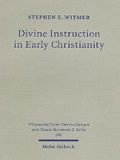
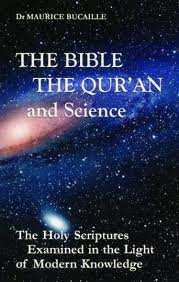
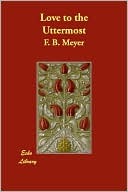
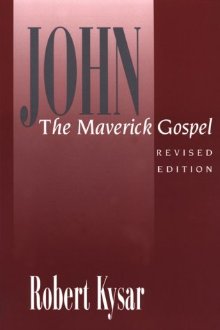
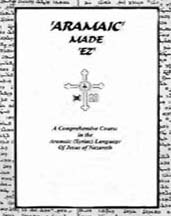

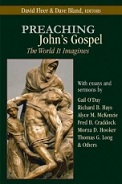

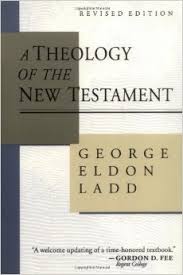
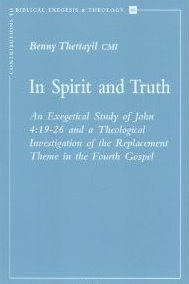


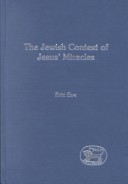
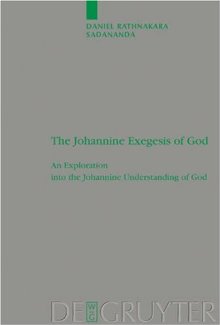

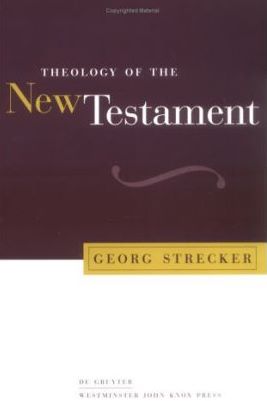
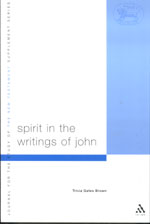
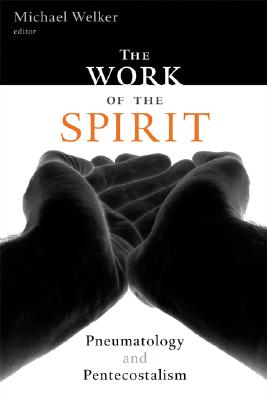
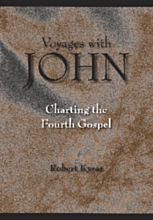


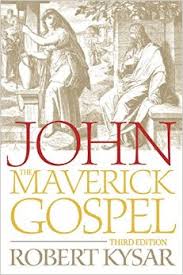
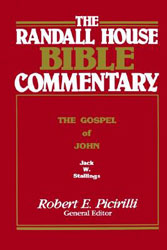
 “The teaching of the Paraclete, as the continuation of Jesus' teaching, must also be understood as the fulfillment of the promise of eschatological divine instruction.”
“The teaching of the Paraclete, as the continuation of Jesus' teaching, must also be understood as the fulfillment of the promise of eschatological divine instruction.”Stephen E. Witmer, Divine instruction in Early Christianity
“Jesus therefore predicts that God will later send a human being to Earth to take up the role defined by John .i.e. to be a prophet who hears God's words and repeats his message to man.”
M. Bucaille, The Bible, the Qur'n, and Science
“And when Jesus foreannounced another Comforter, He must have intended a Person as distinct and helpful as He had been.”
F. B. Meyer, Love to the Utmost
“The Paraclete has a twofold function: to communicate Christ to believers and, to put the world on trial.”
Robert Kysar, John The Meverick Gospel
“But She—the Spirit, the Paraclete...—will teach you everything.”
Danny Mahar, Aramaic Made EZ)
“Grammatical nonsense but evidence of the theological desire to defeminize the Divine.”
Lucy Reid, She Changes Everything
“The functions of the Paraclete spelled out in verses 13-15... are all acts of open and bold speaking in the highest degree.”
David Fleer, Preaching John's Gospel
“The reaction of the world to the Paraclete will be much the same as the world's reaction was to Jesus.”
Berard L. Marthaler, The Creed: The Apostolic Faith in Contemporary Theology
Bultmann calls the “coming of the Redeemer an 'eschatological event,' 'the turning-point of the ages.”
G. Ladd, A Theology of the New Testament
“The Paraclete equated with the Holy Spirit, is the only mediator of the word of the exalted Christ.”
Benny Thettayil, In Spirit and Truth
“The divine Paraclete, and no lessor agency, must show the world how wrong it was about him who was in the right.”
Daniel B. Stevick , Jesus and His Own: A Commentary on John 13-17
Stephen Smalley asserts that “The Spirit-Paraclete ... in John's Gospel is understood as personal, indeed, as a person.”
Marianne Thompson, The God of the Gospel of John
“The Messiah will come and the great age of salvation will dawn (for the pious).”
Eric Eve, The Jewish context of Jesus' Miracles
“The remembrance is to relive and re-enact the Christ event, to bring about new eschatological decision in time and space.”
Daniel Rathnakara Sadananda, The Johannine Exegesis of God
“The Spirit acts in such an international situation as the revealer of 'judgment' on the powers that rule the world.”
Michael Welker, God the Spirit
The Paraclete's “Appearance means that sin, righteousness, and judgment will be revealed.”
Georg Strecker, Theology of the New Testament
“While the Spirit-Paraclete is the true broker, the brokers they rely on are impostors.”
T. G. Brown, Spirit in the writings of John
“The pneumatological activity ... of the Paraclete ... may most helpfully be considered in terms of the salvific working of the hidden Spirit.”
Michael Welker, The work of the Spirit
“The pneuma is the peculiar power by which the word becomes the words of eternal life.”
Robert Kysar, Voyages with John
“The gift of peace, therefore, is intimately associated with the gift of the Spirit-Paraclete.”
Francis J. Moloney, The Gospel of John
“This utopian hope, even when modestly expressed, links Jesus and the prophets to a much wider history of human longing.”
Harvey Cox, The Future of Faith
“Because of the presence of the Paraclete in the life of the believer, the blessings of the end-times—the eschaton—are already present.”
Robert Kysar, John
“They are going, by the Holy Spirit's power, to be part of the greatest miracle of all, bringing men to salvation.”
R. Picirilli, The Randall House Bible Commentary
“The Kingdom of God stands as a comprehensive term for all that the messianic salvation included... is something to be sought here and now (Mt. 6:33) and to be received as children receive a gift (Mk. 10:15 = Lk. 18:16-17).”
G. Ladd, A Theology of the New Testament
Disclaimer: Our material may be copied, printed and distributed by referring to this site. This site also contains copyrighted material the use of which has not always been specifically authorized by the copyright owner. We are making such material available to our readers under the education and research provisions of "fair use" in an effort to advance freedom of inquiry for a better understanding of religious, spiritual and inter-faith issues. The material on this site is distributed without profit. If you wish to use copyrighted material for purposes other than “fair use” you must request permission from the copyright owner.